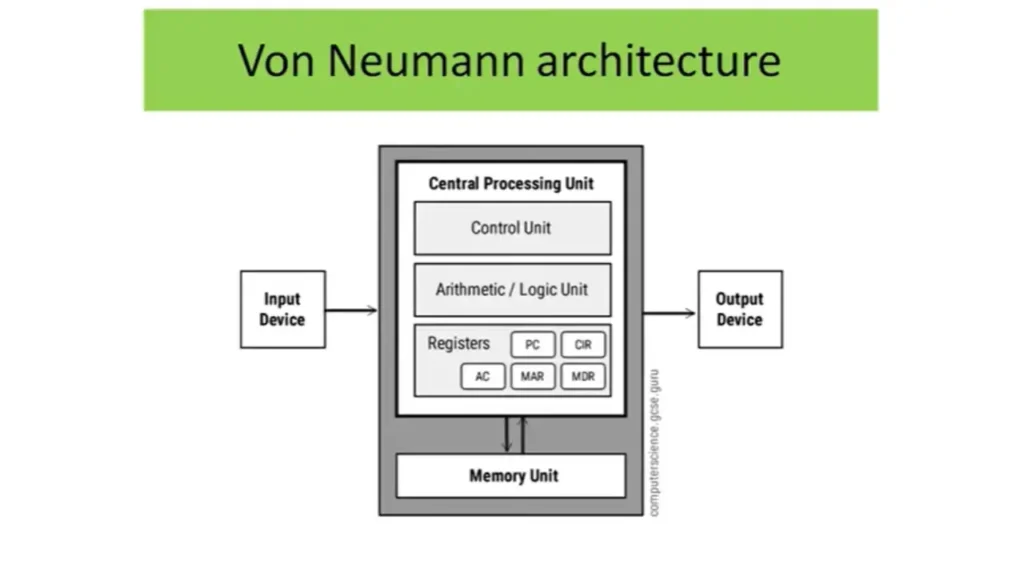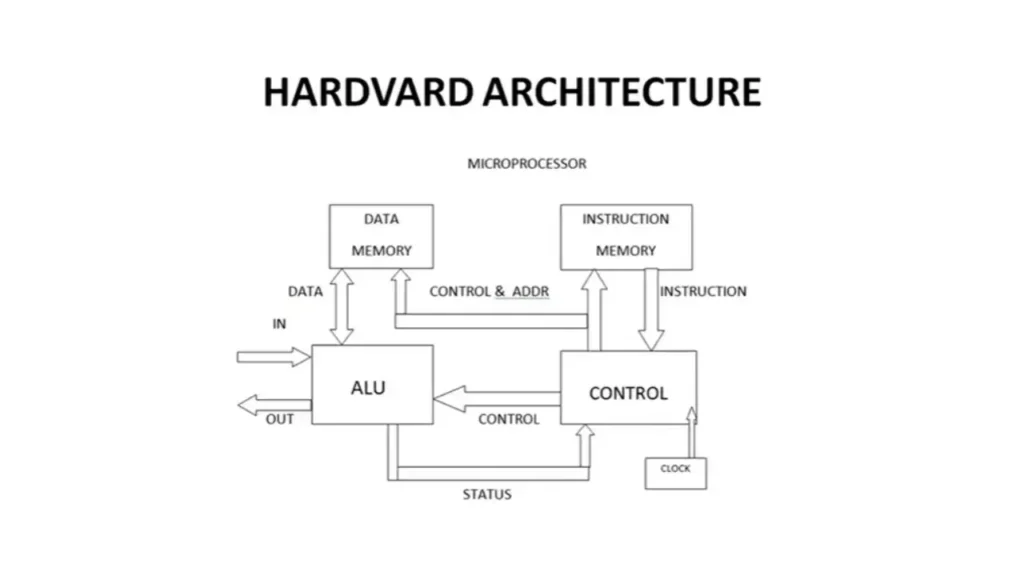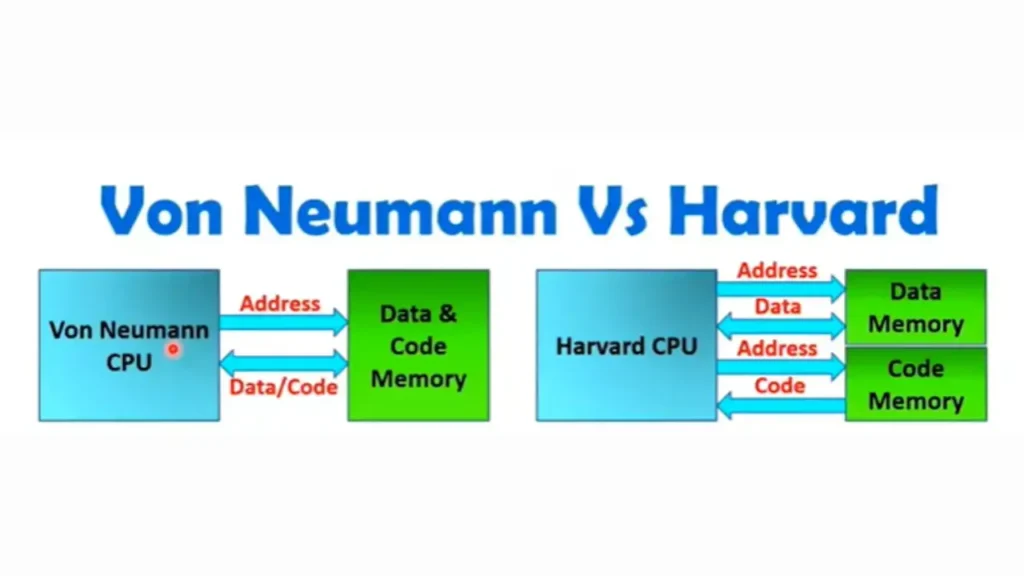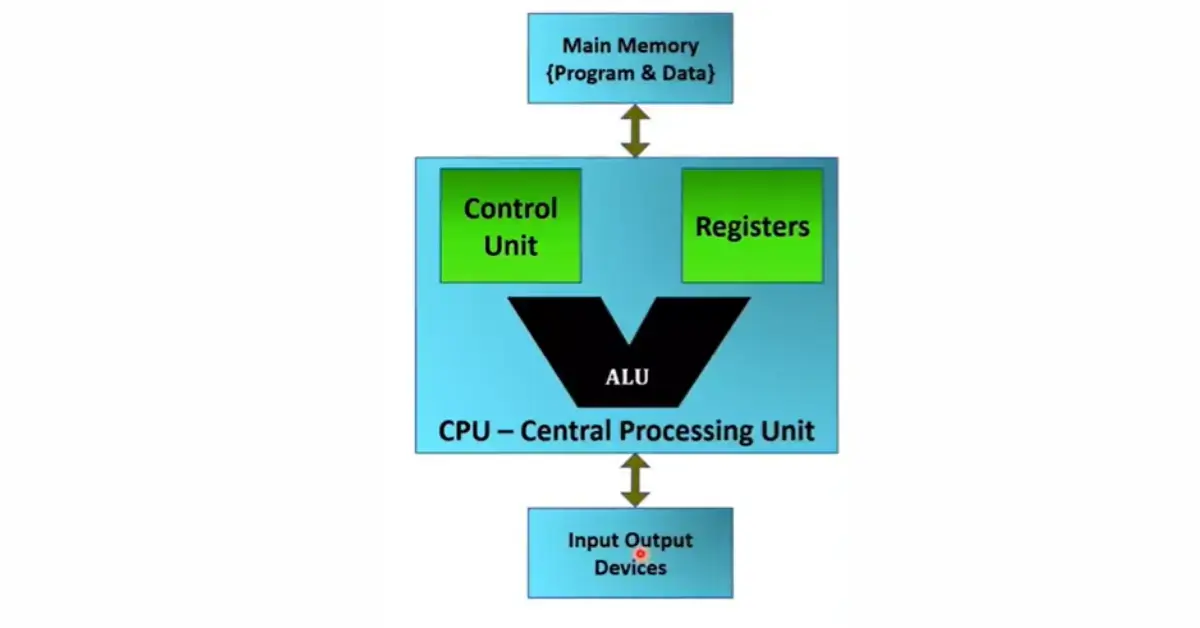Von Neumann Architecture |Von Neumann Model
Introduction
In this article, I am going to explain two different types of architecture. One is Von Neumann Architectures and the other is Harvard Architecture. Before explaining this let’s discuss what is architecture. Every object in the world has its architecture like humans have their body architecture, cars have their own, and even buildings & offices have their architectures. Architecture defines how the function works. In the same way, computers have their architecture on which computers run. Architecture is also known as computer models. There are two basic types of architecture, Von Neumann Architecture and Harvard Architecture.
What is Von Neumann Architecture?

Von Neumann Architecture was designed and developed by the great Mathematician and Scientist John Von Neumann in 1945. Most of the computers of today’s world are run on Von Neumann Architecture, whether mainframe or personal computers. It is based on the stored program computer concept, where instruction data and program data are stored in the same memory. It is also known as stored Memory Architecture. What does Stored Memory Mean?
Stored Memory
Stored memory means that generally, we keep two items in Memory, i.e. Data and associated programs or you may say it is a set of instructions. The CPU can be either reading instructions or reading or writing data from the memory because instructions and data use the same bus system.
Components of Von Neumann Architecture
Von Neumann Architecture Consists of different units or components like Input units, Processor Units, and Output Units, buses, Memory Units, I/O Units.
1-CPU(Central Processing Unit)
The central processing unit (CPU) is the electronic circuit responsible for executing the instructions of a computer program.it is also sometimes referred to as a Microprocessor or Processor. The CPU consists of three parts i.e. ALU, Control Unit, and Registers.
(a). ALU
The ALU allows arithmetic (add, subtract, etc) and logic( AND, OR, NOT, etc) operations to be carried out.
(b). Control Unit
The control unit controls the operation of the computer’s ALU, Memory and Input/Output devices, telling them how to respond to the program instructions it has just read and interpreted from the memory unit.it maintains the timing and control signals required by other computer components.
(c). Registers
The registers are high speed storage areas in the CPU. All data must be stored in a register before it can be processed.registers are the fastest available memory and contain the temporary data of very small size. There are different types of registers such as MAR, MDR, AC, and PC, etc.
Types of Registers
(a). Memory Address Register(MAR)
It holds the memory location of data that needs to be accessed.
(b). Memory Data Register(MDR)
It holds the data that is being transferred to or from memory.
(c). Accumulator (AC)
Accumulator is a place where the intermediate arithmetic and logic results are stored.
(d). Program counter(PC)
Program counter contains the address of the next instruction to be executed.
2-Buses
Buses are the means by which data is transmitted from one part of a computer to another, connecting all major internal components to the CPU and Memory.there are different types of buses such as Address Bus, Data Bus, Control Bus.
(a). Address Bus
It carries the addresses of data (but not the data) between the processor and memory.
(b). Data Bus
Carries data between the processor, the memory unit and the input/output devices.
(c). Control Bus
It carries control signals/ commands from the CPU (and status signals from other devices) in order to control and coordinate all the activities within the computer.
3-Memory unit
The memory unit consists of Random Access Memory(RAM), sometimes referred to as primary or main memory. Unlike a hard drive(Secondary Memory), this memory is fast and also directly accessible by the CPU. RAM is split into partitions and each partition consists of an address and its contents(both in binary form). The address will uniquely identify every location in the memory.
4-I/O Unit
Peripheral devices, used to take inputs and supply outputs.
What is Harvard Architecture?

The Harvard Architecture has a physically separated storage and signal pathways for instructions and data. In the Harvard Architectural computer, the CPU can read both an instruction and data from memory at the same time, leading to double the memory bandwidth. In this architecture, programs and data are stored and handled by different subsystems. For example, microcontroller-based computer systems (Single-Chip Microcomputer) and DSP(Digital Signal Processor) based computer systems.
Comparison Between Von Neumann Architecture and Harvard Architecture

| Parameters | Von Neumann Architecture | Harvard Architecture |
|---|---|---|
| Memory | Data and Programs (Code) are stored in memory. | Data and Programs (code) are stored in different memorise. |
| Memory Type | It has only RAM for data and code | Data and Programs (code) are stored in different memorie. |
| Buses | It has a common bus for Address and data/code. | It has a separate bus address and data/code. |
| Program execution | Code is executed serially and takes more cycles. | Code is executed in parallel with data so it takes less cycles. |
| Data/ Code Transfer | Data or code in one cycle | Data and code in one cycle. |
| Control Signals | Less | More |
| Space | It needs less space. | It needs more space. |
| Cost | Cheap | Expensive |

